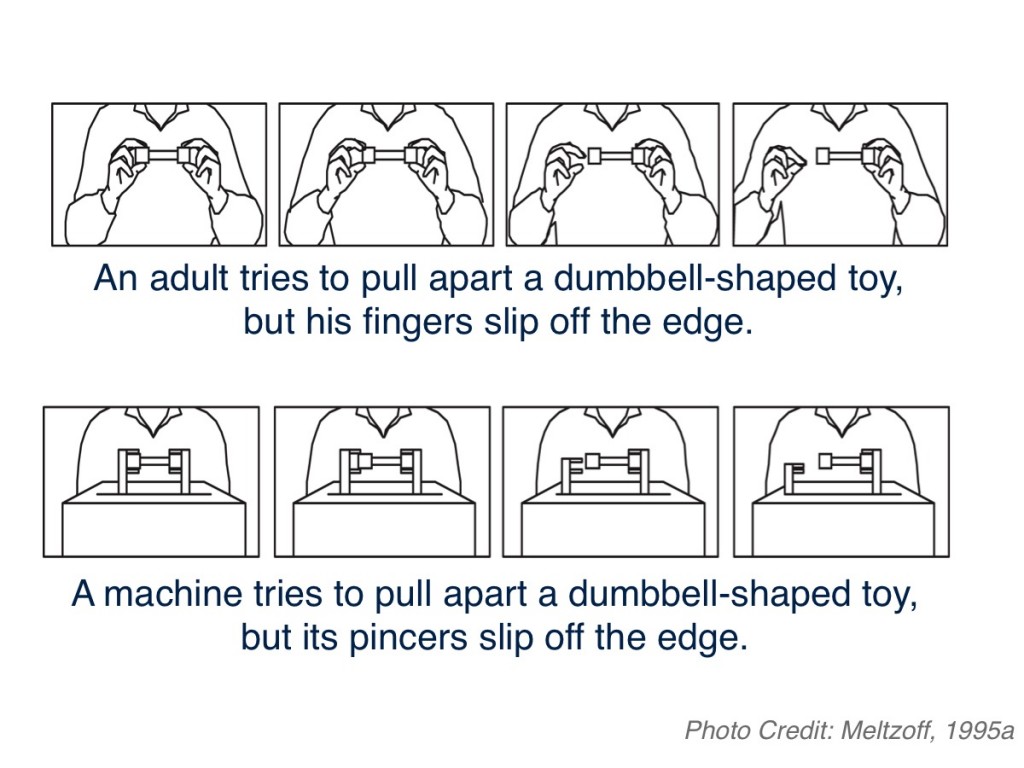
So far we have discussed some examples of infants and toddlers imitating an adult’s action under perfect conditions. In our everyday lives, however, we make mistakes and our actions don’t always turn out as we intended. You might, for example, rush to pour milk into your child’s bottle only to miss and have it spill on the floor as your child looks on. Does the young child understand what your intentions and goals were (in this case, to pour milk in the bottle) or are young children automatic imitation machines who imitate exactly what they see?
In a study designed to answer this question, 18-month-old infants watched either an adult or a machine attempt different actions, like trying to pull apart a dumbbell-shaped toy. But as the person or machine pulled, children saw the adult’s fingers or the machine’s pincers slip off the edge. They failed to complete the action. And guess what the children did? After watching the adult fail to complete the action, children pulled apart the dumbbell. They performed the goal action, not the actual action they watched. However, infants who saw the machine fail did not pull the dumbbell apart. Infants didn’t attribute goals and intentions to a non-human machine. At just 18 months of age children showed an awareness of people’s goals and intentions. They understand what we intend to do, not just what we actually do.
In the 2nd year of life, children are beginning to understand the mental states inside another person’s head. This is important as children develop the unique human capacity for what is called a theory of mind. Theory of mind is the ability to realize that others have thoughts, wants, hopes, and emotions that differ from one’s own. It supports the development of empathy, compassion, and prosocial behavior by enabling children to put themselves in someone else’s shoes. It helps children take the perspective of other people who differ from them.
-
- Control group
- a group in a study who does not receive the treatment. The group serves as a comparison for the experimental group.
- Deferred imitation
- reproducing a behavior after a delay from its initial demonstration
- Electroencephalography (EEG)
- a method used to measure electrical activity in the brain
- Generalization
- the ability to apply something learned in one situation to a new situation
- Imitation
- observing then reproducing, or copying, a behavior
- Mirror neurons
- a type of brain cell. Mirror neurons respond when an animal produces an action and when they observe another animal produce the same action.
- Theory of mind
- the awareness that other people can have different thoughts and feelings from one’s own
- Trial-and-error learning
- trying different actions until you perform the right one